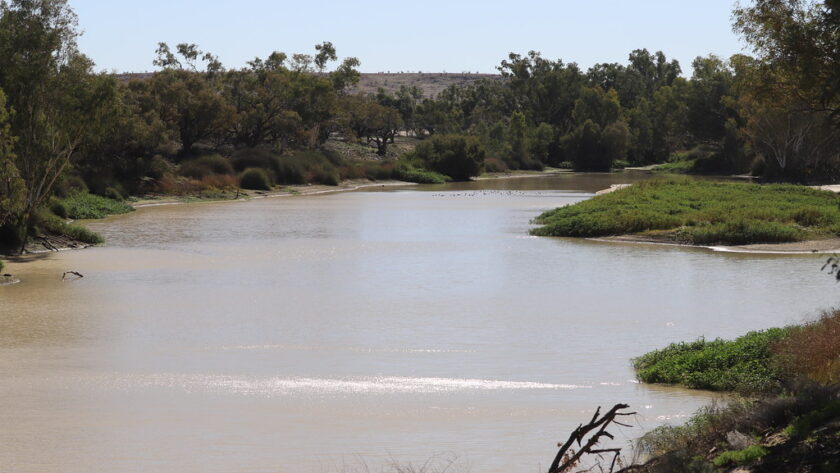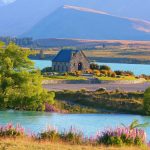Australia, a land of diverse landscapes and vast wilderness, is home to some of the most remote towns on Earth. These hidden gems offer travelers a unique escape from the bustling crowds and a glimpse into a different kind of lifestyle. Scattered across the continent, from the harsh deserts to the pristine coastlines, these towns are not just destinations; they are experiences.
Why Seek Out Australia’s Remote Towns?
For those with an adventurous spirit, the appeal of Australia’s most remote towns lies in their isolation. These are places where the natural beauty is untamed and vast, where you can stand under a canopy of stars without the light pollution of the cities, and where the silence is only broken by the sounds of nature. They offer off-the-beaten-path experiences that you won’t find in any travel guide.
A Journey Beyond the Ordinary
Visiting these remote towns is not just about the destinations but the journey itself. The roads less traveled lead to discoveries about the land, its history, and its people. These towns offer a unique perspective on Australia, showcasing the resilience of communities living in extreme conditions and the beauty of landscapes that have remained unchanged for millennia.
The Appeal of Uncharted Beauty
Each town has its own story, its own landscape, and its own charm. From the red sands of the outback to the turquoise waters of a secluded beach, the natural beauty of these areas is breathtaking. Wildlife abounds, and the flora and fauna can be vastly different from what you see in more populated areas. For photographers, nature lovers, and anyone looking to disconnect from the digital world, these towns are a paradise.
In this guide, we will explore the top 10 most remote towns in Australia. These are places where you can truly escape the crowds, connect with nature, and experience the authentic Australian outback. Get ready to discover Australia’s best-kept secrets and embark on an adventure that will take you to the heart of the country’s most isolated and beautiful locations.
Coober Pedy, South Australia: A Unique Blend of Culture and Nature
Coober Pedy, nestled in the heart of South Australia, is often referred to as “The Opal Capital of the World.” This remote town is not only famous for its abundant opal mines but also for its unique underground homes, known as dugouts. These dwellings, art galleries, churches, and hotels carved out of the rocky terrain offer visitors a glimpse into an extraordinary way of life. Here’s why Coober Pedy is a must-visit for those looking to explore one of Australia’s most remote and intriguing towns.
The Allure of Underground Living
The extreme temperatures in Coober Pedy have led residents to create homes beneath the earth’s surface. These underground dwellings, or dugouts, provide natural insulation, keeping the interiors cool in summer and warm in winter. What makes these underground spaces more fascinating are:
- Underground Churches: Marvel at the intricate carvings and serene atmosphere of churches like the Serbian Orthodox Church, with its beautiful underground architecture.
- Art Galleries and Museums: Explore galleries that showcase local art, opal jewelry, and artifacts that tell the tale of Coober Pedy’s rich history.
- Unique Hotels: Experience a night underground at one of Coober Pedy’s dugout hotels, offering a comfortable and memorable stay.
The Opal Capital of the World
Coober Pedy’s reputation as the world’s opal capital is well-deserved, with the town being a significant source of this precious gemstone. Here’s what makes it special:
- Opal Mining History: Learn about the history of opal mining in the area, which began in 1915, and how it shaped the town’s development.
- Opal Shops and Tours: Visit local shops where you can admire and purchase opal jewelry. Many mines offer tours, providing an up-close look at how opals are extracted from the earth.
A Town Like No Other
Coober Pedy stands out for its stark landscape, reminiscent of a moonscape, and its unique way of life. Visitors to this remote town can expect to experience:
- A Welcoming Community: Despite its remote location, Coober Pedy’s residents are warm and welcoming, offering insights into their unique lifestyle.
- Adventure and Exploration: Beyond the town, the surrounding desert offers opportunities for adventure, including the Breakaways Reserve, a stunning area with colorful hills and a backdrop that has been featured in many films.
Karratha, Western Australia: A Gateway to Natural Wonders
Karratha, a vibrant town in Western Australia, serves as the perfect gateway to the awe-inspiring Pilbara region. Known for its breathtaking landscapes, rich cultural history, and unique outdoor adventures, Karratha offers visitors a chance to immerse themselves in the beauty and diversity of the Australian outback. From the majestic gorges of Karijini National Park to the pristine waters of the Dampier Archipelago, Karratha is a destination that promises adventure and discovery.
1. Exploring Karijini National Park
Karijini National Park, one of Australia’s most spectacular natural attractions, is just a drive away from Karratha. The park is renowned for its:
- Stunning Gorges: Hike through dramatic gorges carved out of the earth over millennia. Each gorge offers a unique landscape, with sheer cliffs, cascading waterfalls, and serene rock pools.
- Rock Pools and Waterfalls: Take a refreshing dip in crystal-clear rock pools or marvel at the beauty of the park’s waterfalls. Fern Pool and Fortescue Falls are among the must-visit spots for nature lovers.
- Aboriginal Rock Art: Discover ancient Aboriginal rock paintings that provide a glimpse into the region’s rich cultural history. These artworks tell stories of the land and its people, dating back thousands of years.
2. The Dampier Archipelago: An Island Paradise
Just off the coast of Karratha lies the Dampier Archipelago, a group of islands offering untouched natural beauty and exciting outdoor activities:
- Island Hopping: Explore the archipelago’s many islands, each with its own unique landscapes and ecosystems. Whether you’re seeking solitude on a deserted beach or an adventurous hike, there’s an island for every taste.
- Snorkeling and Fishing: The clear waters around the islands are ideal for snorkeling and fishing. Discover vibrant coral reefs teeming with marine life or try your luck at catching a variety of fish species.
- Cultural Heritage Sites: The islands are also home to significant cultural heritage sites, including ancient Aboriginal rock art. These sites offer a fascinating insight into the traditional custodians of the land.
3. A Town of Contrast and Culture
Karratha itself is a town of contrast and culture, where the ancient landscape meets modern amenities. Visitors can enjoy:
- Local Cuisine: Sample the local cuisine at one of Karratha’s restaurants or cafes, offering dishes that incorporate fresh, local ingredients.
- Cultural Experiences: Engage with the local community and learn about the area’s history and cultural significance through museums, art galleries, and cultural tours.
- Outdoor Adventures: Beyond the national park and archipelago, the region offers countless opportunities for outdoor adventures, from camping under the stars to 4WD tours of the rugged landscape.
Kiwirrkurra Community, Western Australia
The Kiwirrkurra Community stands as one of the most isolated Aboriginal communities, nestled in the vast expanse of the Gibson Desert. This remote location offers a unique opportunity to:
- Immerse in Aboriginal Culture: Engage with the community to learn about the enduring traditions, languages, and spiritual beliefs that have been preserved for generations.
- Witness Ancient Rock Art: Explore the desert landscape to discover ancient rock art, offering a window into the spiritual and historical narratives of the Indigenous people.
- Support Sustainable Tourism: Participating in community-led tourism initiatives provides support to the Kiwirrkurra people, ensuring their way of life continues to thrive for future generations.
Macquarie Island, Tasmania
Macquarie Island, a UNESCO World Heritage Site, is a haven for wildlife enthusiasts and conservationists alike. This subantarctic island is a unique ecosystem where you can:
- Witness Incredible Wildlife: Encounter colonies of penguins, herds of seals, majestic albatrosses, and other seabirds in their natural habitat.
- Understand Conservation Efforts: Learn about the delicate balance of this unique ecosystem and the critical conservation work being undertaken to preserve it for future generations.
- Explore a World Heritage Site: Experience the sheer beauty and isolation of Macquarie Island, understanding why it’s considered one of the planet’s most significant natural sites.
Kalgoorlie-Boulder, Western Australia
Kalgoorlie-Boulder, the heart of the Goldfields region, boasts a rich history shaped by the gold rush era. This vibrant town offers a deep dive into Australia’s mining heritage where you can:
- Explore Gold Mining History: Visit historic mine shafts, engaging museums, and ghost towns that tell the story of the area’s golden past.
- Learn About the Gold Rush: Understand the impact of the gold rush on Australia’s development, and the ongoing significance of mining in the region.
- Adventure in Karijini National Park: Although previously mentioned, the proximity of Kalgoorlie-Boulder to Karijini National Park warrants another visit for its breathtaking gorges, pools, and Aboriginal rock art.
Eucla, Western Australia: A Desert Oasis
Nestled on the edge of the Nullarbor Plain, Eucla is a tiny town that serves as a beacon of history and natural beauty in the harsh desert environment. Here’s what makes Eucla a unique stop on your remote Australian adventure:
- Eucla Telegraph Station Ruins: Once a critical communication hub, the ruins of the Eucla Telegraph Station are a haunting reminder of the town’s past importance in the early days of telecommunication.
- Starry Night Skies: With minimal light pollution, Eucla offers some of the most spectacular night skies. Stargazers can revel in the unobstructed views of the Milky Way stretching across the horizon.
- Scenic Drive on the Eyre Highway: A drive along the Eyre Highway, which runs through Eucla, is an unforgettable experience. This stretch is known for being one of the longest straight roads in the world, offering expansive views of the Nullarbor Plain’s unique landscape.
Purnululu (Bungle Bungle Range), Western Australia: A Geological Marvel
The Purnululu National Park, recognized as a UNESCO World Heritage Site, is renowned for its striking Bungle Bungle Range. This area is not only a feast for the eyes but also a place of great cultural and natural significance.
- Unique Striped Sandstone Domes: The park’s most famous feature, the striped sandstone domes of the Bungle Bungle Range, are a natural wonder formed over millions of years. Their distinctive beehive-like shapes and orange and black bands create a surreal landscape.
- Aboriginal Rock Art Sites: Purnululu is rich in Aboriginal culture, with numerous ancient rock art sites scattered throughout the park. These sites offer a glimpse into the long-standing connection between the land and its Indigenous peoples.
- Camping Under the Stars: For the ultimate Purnululu experience, spend a night camping in the national park campground. Surrounded by the park’s breathtaking landscapes, camping here allows you to fully immerse yourself in the natural beauty and tranquility of this remote wonder.
Mornington Island, Queensland: A Cultural and Natural Paradise
Nestled in the Gulf of Carpentaria, Mornington Island is a testament to the enduring beauty and culture of the Indigenous Australian communities, particularly the Lamilami people. Here’s what makes Mornington Island a must-visit:
- Pristine Natural Beauty: The island’s turquoise waters, coral reefs, and diverse marine life create a paradise for nature lovers. It’s an ideal spot for fishing, snorkeling, and simply soaking in the serene beauty of untouched landscapes.
- Rich Indigenous Culture: Mornington Island offers a unique opportunity to engage with the Lamilami people’s traditions. Participate in cultural activities, learn about their deep connection with the land, and experience the vibrant Indigenous art scene.
- Wildlife Encounters: The island is home to a plethora of bird species and marine life, offering spectacular opportunities for birdwatching and wildlife photography.
Innamincka, South Australia: An Outback Adventure
Innamincka is a tiny outpost near the edge of the Simpson Desert and the meandering Cooper Creek, providing a stark contrast to the lush landscapes of Mornington Island. This remote town offers an authentic outback experience:
- Experience True Remoteness: Innamincka is the epitome of isolation, allowing visitors to experience the vastness and tranquility of the Australian outback. The town serves as a base for exploring the Simpson Desert’s unique landscapes.
- Iconic Birdsville Track: For adventurers, the Birdsville Track presents one of Australia’s most iconic outback journeys. Traverse this legendary route to witness the stark beauty of the desert and its surprisingly vibrant ecosystem.
- Innamincka Regional Reserve: This reserve is a haven for rare desert wildlife, offering a chance to see species uniquely adapted to the harsh environment. The area is also rich in history, with several sites significant to early explorers and the Indigenous communities.
Planning Your Remote Australian Adventure
Embarking on an adventure into Australia’s remote regions is an exciting prospect, offering unparalleled opportunities to explore the natural beauty, unique wildlife, and cultural heritage of the Outback and beyond. However, such an adventure requires careful planning and preparation to ensure a safe and enjoyable experience. Here’s your guide to getting ready for your remote Australian adventure.
Consideration for Remoteness
When planning your journey, the remoteness of your destination is a crucial factor to consider. Here’s what you need to know:
Transportation Options
- Flights: Some remote areas are accessible by small regional or charter flights. Research available air services as this can save significant travel time.
- Driving Distances: Many remote destinations require long drives on potentially challenging outback roads. Ensure your vehicle is suitable for the conditions, and you’re prepared for the journey.
- Limited Services: Services such as fuel stations, food, and water can be scarce. Plan your stops and carry necessary supplies, including spare fuel.
Packing Essentials for Self-Sufficiency
Self-sufficiency is key in remote areas. Here’s what you should pack:
- Food and Water: Carry sufficient supplies for your journey plus extra in case of emergency. Non-perishable food items and water purification methods are recommended.
- Appropriate Clothing: Prepare for all weather conditions. Pack lightweight, breathable clothing for the day and warm layers for cooler nights.
- Safety and Navigation: Include a first-aid kit, maps, GPS device, and a satellite phone or other communication devices for areas without mobile coverage.
Best Time to Visit: Weather Conditions
The best time to visit Australia’s remote regions varies significantly by location:
- Northern Australia (Tropical Regions): The dry season (May to October) offers cooler temperatures and less humidity, making it the ideal time to visit.
- Southern Australia (Desert Regions): Avoid the peak of summer (December to February) when temperatures can be extremely high. Spring (September to November) and autumn (March to May) are more comfortable.
- Coastal Areas: These can be visited year-round, though be mindful of the cyclone season in the north (November to April).
Example Itineraries by Season
- Dry Season in the North: Explore the Kimberley or Top End. Enjoy clear skies, waterfalls, and comfortable hiking conditions.
- Spring/Autumn in the South: Visit the vast deserts of South Australia or Western Australia. Witness wildflowers in bloom and cooler daytime temperatures ideal for exploration.
- Year-Round Coastal Adventures: Tasmania’s remote coastlines or Queensland’s tropical islands offer diverse experiences that can be enjoyed at any time of the year.
Planning a remote Australian adventure is an exciting endeavor that requires attention to detail. By considering the aspects of transportation, packing essentials, and the best time to visit, you can ensure a memorable and safe experience exploring the wonders of Australia’s most secluded destinations.
Essential Tips for Responsible Remote Travel
Embarking on a journey to Australia’s remote regions is an adventure that promises unparalleled experiences with nature, wildlife, and indigenous cultures. However, with these remarkable experiences comes the responsibility to travel respectfully and sustainably. Here are essential tips to ensure your remote travels are conducted responsibly and ethically.
Respecting the Environment
When venturing into remote areas, the importance of minimizing our impact on the natural environment cannot be overstated. Here’s how to adhere to Leave No Trace principles:
- Minimize Waste: Pack out all trash, leftover food, and litter. Utilize reusable containers and avoid single-use plastics.
- Stay on Trails: Reduce soil erosion and vegetation damage by sticking to marked paths when hiking or exploring.
- Responsible Wildlife Viewing: Observe animals from a distance to avoid disturbing them. Feeding wildlife alters their natural behaviors and diet.
Supporting Local Communities
Remote travels often lead to encounters with local communities, including Indigenous peoples who have lived in these areas for thousands of years. Supporting these communities respectfully can enrich your travel experience:
- Choose Aboriginal-Owned Businesses: Whether it’s tour operators, accommodations, or art galleries, supporting Aboriginal-owned businesses ensures your travel benefits the local economy directly.
- Participate in Cultural Experiences Respectfully: Engage with local cultures through guided tours and experiences that offer insight into the community’s traditions and way of life. Always ask permission before taking photographs or entering sacred sites.
Being Prepared
The remoteness that makes these destinations so appealing also comes with challenges, especially regarding safety and communication. Here’s how to be adequately prepared:
- Research Emergency Procedures: Familiarize yourself with local emergency contacts and the nearest medical facilities. Understand the specific risks associated with your destination.
- Communication Limitations: In many remote areas, cell phone service is non-existent. Consider renting a satellite phone or carrying a personal locator beacon (PLB) for emergencies.
- Weather Hazards: Research the weather conditions for the time of year you plan to visit. Prepare for sudden changes in weather by packing appropriate clothing and equipment.
Example Preparations by Destination
- Desert Regions: Carry extra water, sun protection, and know the signs of heat exhaustion.
- Coastal Areas: Be aware of tide times and marine hazards such as jellyfish or strong currents.
- Mountainous Terrain: Prepare for rapid weather changes and have the necessary gear for cold temperatures.
Conclusion:
Australia’s remote towns are not just destinations; they are gateways to some of the most unique and enriching experiences the world has to offer. From the ancient landscapes of the Outback to the vibrant cultures of Indigenous communities, these areas invite adventurers to step off the beaten path and into a world of discovery.
Unique Experiences Await
In these remote corners, travelers find themselves immersed in the stunning natural beauty, from towering rock formations to pristine coastal waters teeming with life. The opportunity to engage with Aboriginal culture adds an invaluable layer of depth to the journey, offering insights and experiences that are both educational and deeply moving. Whether it’s the stark beauty of the desert, the lushness of a tropical island, or the rich history of a gold rush town, each destination offers its own unique allure.
An Adventure-Filled Escape
For those yearning for adventure beyond the usual tourist trails, Australia’s remote towns offer the perfect escape. Each visit promises not just a trip, but a journey of discovery, learning, and unforgettable experiences. We encourage you to consider these less-traveled paths for your next adventure, where the beauty of nature and the spirit of exploration come alive.
FAQ
Q: Are remote Australian towns accessible by public transportation?
A: Access varies widely. Some towns may be accessible by regional flights or bus services, while others require a private vehicle or specialized tours.
Q: What should I pack for a trip to a remote Australian town?
A: Essentials include adequate water, sun protection, appropriate clothing for varying temperatures, and any necessary permits or passes for visiting Indigenous lands or protected areas.
Q: Can I participate in Indigenous cultural experiences in these towns?
A: Yes, many remote towns offer cultural tours and experiences led by Indigenous guides. It’s important to approach these opportunities with respect and openness to learning.
Q: What safety precautions should I take when visiting remote areas?
A: Prepare for limited access to services by informing someone of your travel plans, carrying a means of emergency communication, and being aware of the nearest medical facilities.
Q: Is it possible to visit remote Australian towns sustainably?
A: Absolutely. Travelers are encouraged to minimize their environmental impact, support local economies, and respect cultural sites and traditions.
By choosing one of Australia’s remote towns for your next adventure, you’re not just planning a trip; you’re preparing for an experience that will broaden your horizons and connect you with the heart of this vast country.





